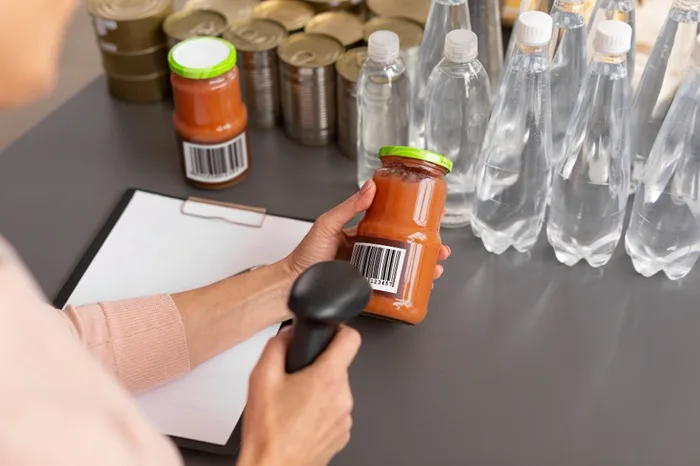A Diabetic’s Guide to Making Healthier Choices
Decoding Food Labels can often feel like deciphering a secret language—especially if you’re managing diabetes and need accurate nutritional data to keep blood sugar levels in check. By mastering the skill of label-reading, you empower yourself to select foods that support steady glucose control, reduce complications, and maintain a balanced lifestyle. In this guide, you’ll learn why nutrition labels matter, how to interpret them, and how to apply that knowledge to everyday shopping and cooking.
Why Decoding Food Labels Matters for Diabetes
When you have diabetes, consistent blood glucose management is vital. Nutrition labels hold key information that can help:
- Track Carbohydrates: Understanding total carbs and added sugars helps you align meals and snacks with your prescribed carbohydrate goals.
- Evaluate Serving Sizes: Overeating—even healthy foods—can disrupt blood sugar levels. Labels reveal realistic portion sizes.
- Identify Hidden Ingredients: Added sugars, sodium, or refined carbs can lurk in seemingly “healthy” products, impacting glucose levels and overall well-being.
For more on how balanced eating supports metabolic health, explore our post on Mastering Portion Control. While it focuses on overall serving sizes, you’ll find plenty of tips that complement label-reading techniques.
Decoding Food Labels: Step-by-Step Breakdown
1. Start with the Serving Size
Every piece of nutritional data on the label is tied to a specific serving. If you consume double the serving size, you also double your intake of carbohydrates, sugars, and sodium. Keep an eye on portion recommendations—often smaller than what most people consider a “single serving.”
2. Carbohydrates and Fiber
- Total Carbs: The main driver for blood sugar changes, total carbs include starches, sugars, and fiber.
- Dietary Fiber: High-fiber foods slow glucose absorption. Subtracting fiber from total carbs provides “net carbs,” a concept that can be vital for some diet strategies.
- Added Sugars: Especially important for diabetes management, these are sugars not naturally present in foods. Minimizing added sugars helps maintain more stable glucose levels.
3. Fats and Sodium
- Types of Fats: Saturated and trans fats can affect heart health—a significant concern for people with diabetes. Focus on healthier monounsaturated or polyunsaturated fats when possible.
- Sodium: Excess sodium can raise blood pressure, which often accompanies diabetes. Check labels to keep sodium within recommended limits.
4. Protein
Protein supports muscle health, satiety, and overall metabolic balance. While it doesn’t spike blood sugar as significantly as carbohydrates, portion sizes of high-protein foods still matter—especially when combined with carbs.
For guidance on balancing these elements across meals, read our post on Seasonal Eating. Although it discusses incorporating fresh produce seasonally, it also covers how to round out plates with proteins and whole grains in diabetes-friendly ways.
Common Pitfalls When Decoding Food Labels
Misleading Serving Sizes
A “serving” can be unrealistically small. If your typical portion is two or three times what’s stated, you’ll consume more carbs and calories than the label implies. Familiarize yourself with measuring cups, kitchen scales, or portion control techniques to avoid underestimating.
“Healthy” Buzzwords
Claims like “organic,” “gluten-free,” or “natural” aren’t indicators of lower carbs or reduced sugar. Always check the Nutrition Facts panel rather than relying on front-of-package marketing. Our post on Megan Rush Recipes offers various wholesome, home-cooked meal inspirations—proving that the best measure of healthiness is often the ingredient list, not a marketing slogan.
Ignoring Ingredient Lists
Products with sugar alternatives, sugar alcohols, or refined flours might still affect your glucose levels. Ingredients appear in descending order by weight, so if sugar, corn syrup, or white flour features near the top, the item may be high in fast-acting carbs.
Decoding Food Labels: Key Tips for Diabetics
1. Watch for Multiple Sugars
Manufacturers might use several sweeteners—like dextrose, fructose, or maltose—throughout the ingredient list. Combined, they can significantly raise overall carb content. Identifying multiple forms of sugar ensures you don’t underestimate total carbs.
2. Pay Attention to Dietary Fiber
If a food item is high in fiber (5g or more per serving), it can help moderate glucose spikes. You might subtract half the fiber grams from total carbs (or all the fiber grams, depending on your medical advice) to estimate net carbs more accurately. We discuss the importance of fiber in The Benefits of Fiber, offering more in-depth strategies for integrating high-fiber choices into your diet.
3. Consider the Glycemic Index (GI)
While not always shown on labels, GI measures how quickly a food raises blood sugar. You can look up general GI values online and weigh them against the label’s carbohydrate data. High-fiber items usually have a lower GI, thus a milder impact on glucose.
Shopping Smart with Decoding Food Labels
- Plan Ahead: Make a grocery list focusing on naturally low-carb, high-fiber foods—like vegetables, lean proteins, and whole grains. Label-reading becomes smoother when you already have a sense of what you need.
- Compare Products: Check multiple brands of similar items (like sauces or bread) to find the lowest carbs and added sugars. Slight differences can lead to big benefits in glucose management over time.
- Beware of Hidden Carbs in Sauces and Spreads: Ketchup, barbecue sauce, and salad dressings often harbor unexpected sugar. Look for “no added sugar” or “low-sugar” versions, and confirm with the label before you buy.
For more advanced strategies around carbohydrate management, check out our guide on Carb Counting Made Simple. Once you’re comfortable reading labels, counting carbs becomes simpler and more precise.
Cooking at Home: Applying What You Learn on Labels
Reading Labels for Recipe Success
If you have a recipe calling for certain packaged ingredients—like canned tomatoes, beans, or sauces—analyzing the label helps you understand the dish’s overall carb and sugar content. By summing up the label data, you’ll create more reliable estimates for each serving’s impact on blood glucose.
Experiment with Healthier Ingredients
Keep an eye out for innovative low-carb or high-fiber flours (like almond or coconut flour) and sugar-free sweeteners. Our post on Healthy Sugar Alternatives for Diabetes covers various sweetener options—particularly relevant when you’re aiming to replicate the taste of sugar without its blood sugar effects.
Explore the Diabetic Air Fryer Cookbook
The Diabetic Air Fryer Cookbook features recipes specifically designed with lower carbs and healthier ingredients in mind. It highlights how an air fryer can produce crispy, flavorful dishes without relying on heavily processed or sugary components. By cross-referencing label data, you’ll know exactly how each recipe fits into your daily carb allotment.
Decoding Food Labels in Social Settings
Work Luncheons or Potlucks
When confronted with shared snacks or potluck dishes, take a moment to read the packaging if available. If uncertain, ask the cook about the dish’s ingredients. Quick inquiries might inform your portion decisions and help you avoid hidden sugars.
Dining Out
Even though full nutrition labels aren’t always accessible in restaurants, many chains provide nutritional info online or on request. Checking it ahead of time or asking for modifications—like sauce on the side—can keep your glucose stable. For more dining-out wisdom, see our post on Dining Out with Diabetes, which shares specific ordering tips and portion control strategies for various cuisines.
Celebrations and Family Gatherings
If a host uses packaged sauces, marinades, or dessert mixes, politely request to see the label or ask about the brand. Understanding carb counts or added sugars helps you stay on track and fosters greater awareness among your social circle about your needs.
Overcoming Common Obstacles in Decoding Food Labels
- Time Constraints
Grocery shopping can feel rushed. Prioritize reading labels for staples you buy frequently. Over time, you’ll memorize the best brands and can swiftly spot new or improved products. - Evolving Recipes
Manufacturers occasionally change recipes, altering nutritional profiles. Double-check labels every so often—even for familiar products—to confirm they’re still suitable. - Language and Terminology
Terms like “total sugars,” “added sugars,” “sugar alcohols,” or “net carbs” can confuse. If uncertain, consult a nutritionist or refer to recognized sources like the U.S. Food and Drug Administration for label-reading guidelines.
The Larger Picture: Balanced Eating and Active Living
Decoding Food Labels is a crucial skill, but it’s not the sole determinant of metabolic health. Combine label-reading with:
- Regular Physical Activity: Consistent exercise improves insulin sensitivity and aids in weight control.
- Stress Management: High cortisol levels can affect blood sugar. Practice relaxation techniques or gentle movement like yoga.
- Planned Meal Timing: Structuring meals and snacks reduces glucose spikes. Learn more in our post on Best Meal Timing for Diabetes for detailed insights.
Final Thoughts on Decoding Food Labels
The process of Decoding Food Labels might feel complex initially, yet it quickly becomes second nature with regular practice. By focusing on serving sizes, total carbs, added sugars, and ingredient lists, you equip yourself to make informed choices that support healthy glucose levels. Whether scanning bread at the store or evaluating soup in your pantry, each moment spent reading a label is an investment in your well-being.
Remember: the journey toward optimal diabetes management involves multiple facets—monitoring blood sugar, staying active, managing stress, and eating balanced meals. Label-reading serves as a cornerstone, ensuring you understand exactly what goes into your body. Over time, you’ll hone these skills and enjoy greater confidence selecting and preparing foods that align with your health goals.


Leave a Reply